When you’re thinking about bringing a dog into your home, especially one with children, it’s essential to consider the alignment between the dog’s personality and your family’s needs. Every dog breed carries distinct traits, and while some are known for their boundless energy and playfulness, others may be more laid-back and patient.
Your lifestyle plays a crucial role in this match; for example, apartment dwellers might prefer a quieter breed that needs less space and exercise, while an active family with a backyard might look for a dog that enjoys being outdoors and active.

Selecting a dog that meshes well with the personality and ages of your children is equally important. Involving your kids in the selection process can provide valuable insights into the dynamic they hope to have with their new pet. While some children may dream of a rambunctious playmate, others might seek a calm companion to read and relax with. By considering factors like the dog’s temperament, size, energy level, and trainability, you can more effectively gauge whether a dog will integrate seamlessly into your family.
Key Takeaways
- Match the dog’s personality with your family’s lifestyle and children’s needs.
- Consider both the dog’s traits and your living environment when choosing a pet.
- Involve your children in the selection process to find a suitable match for everyone.
Essential Factors to Consider When Matching Dogs and Children
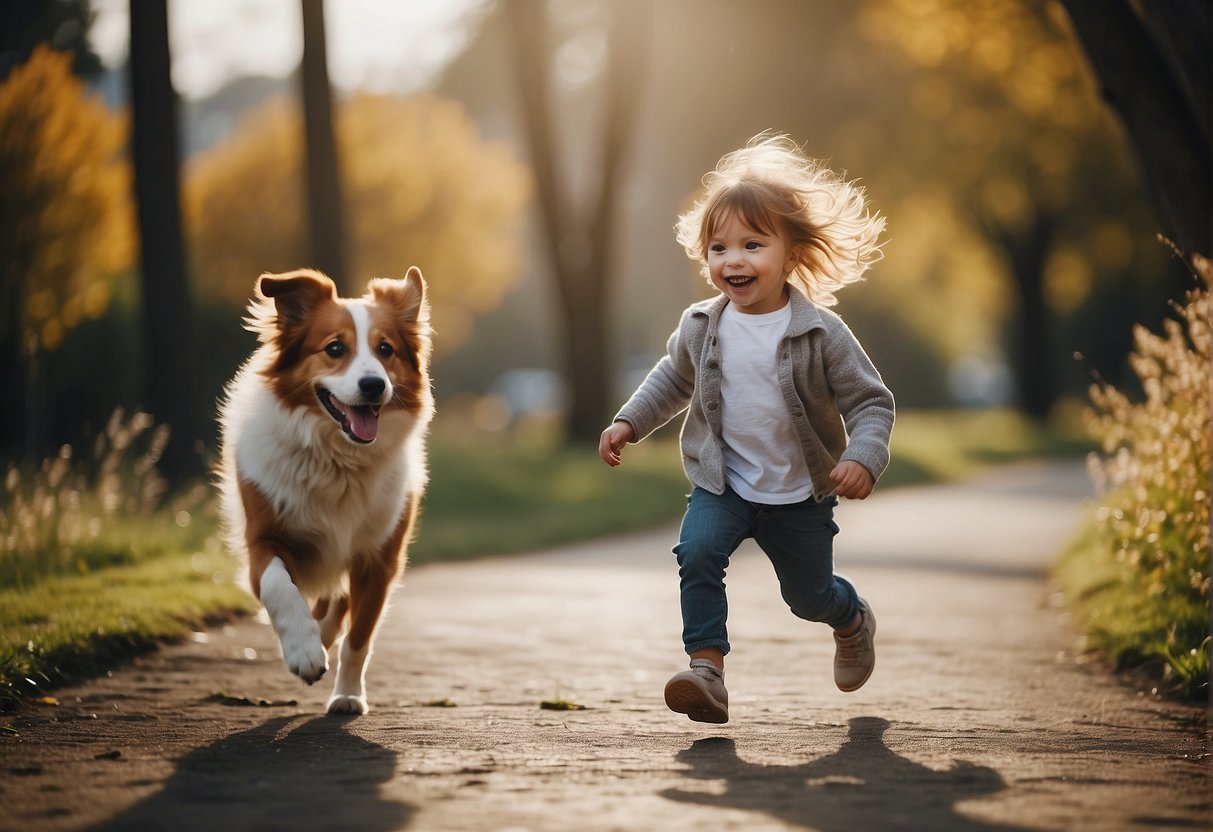
When you’re looking to bring a dog into a home with children, you have to factor in the specific needs and characteristics of both. It’s like finding a new member of the family—everyone has to get along.
Importance of a Dog’s Temperament
Temperament is a big deal. You want a dog that’s chill and patient, right? Some dogs are super cool with kids’ noise and chaos, while others might not be so forgiving. It’s essential to choose a dog known for being friendly and gentle with kids.
Energy Levels and Activity Needs
Dogs are kind of like kids—they need to get their wiggles out. Think about how much energy your dog will have. You’ll need to make sure their exercise needs mesh well with your family’s lifestyle. If you all enjoy long walks or runs, a high-energy dog could be perfect. But if you’re more of a chill-at-home type, a dog with lower energy is probably a better match.
Size and Strength Considerations
Size matters too. A small dog could be fragile, and rough play with young children might not end well. On the flip-flop, a really big dog might accidentally knock over little ones without meaning to. It’s best to find a happy medium—a dog that’s robust enough to handle the play but not too large to overpower the kids.
Child’s Age and Experience with Pets
Finally, think about how old your kids are and if they’ve ever had a pet before. Younger kids or those new to pets might do better with an obedient dog that’s used to being around children. Obedience means easier handling and safer interactions. Make sure to supervise their playtime to ensure a happy household for both the dog and your kids.
Traits of Family-Friendly Dog Breeds
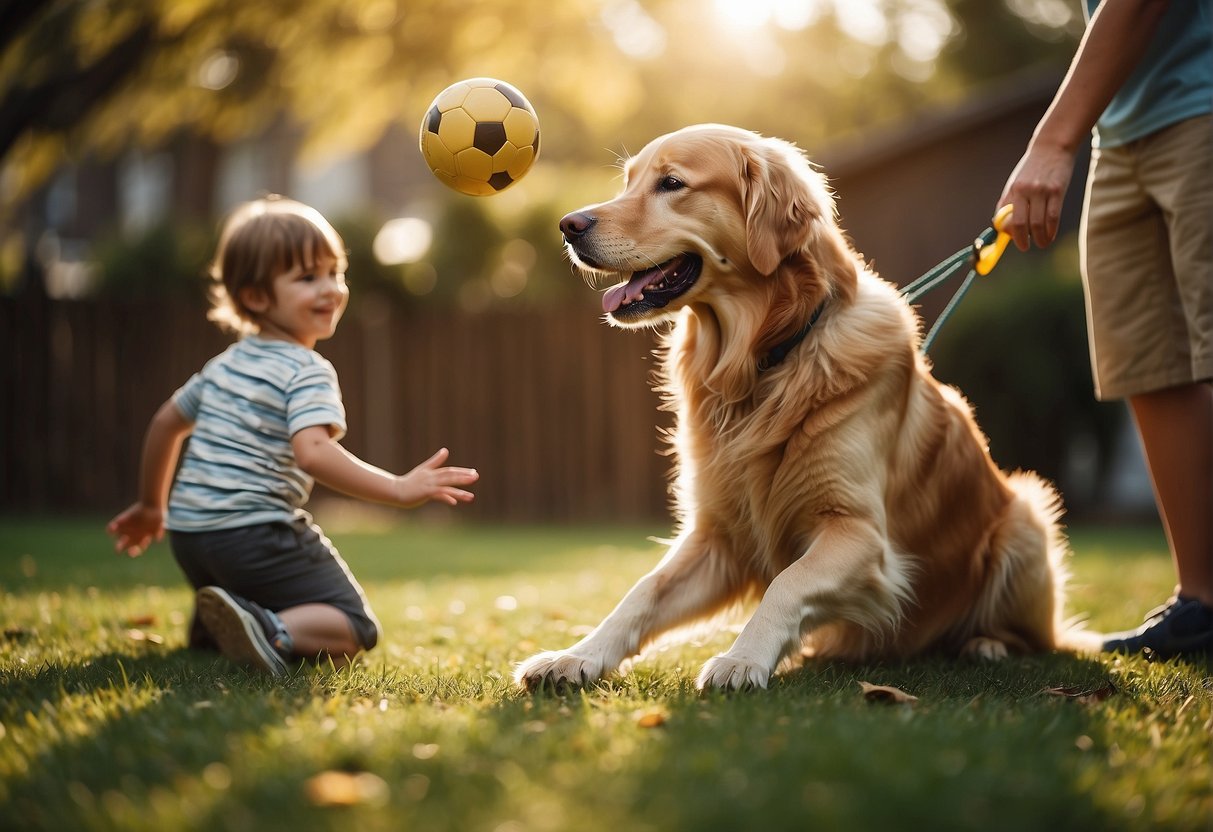
When picking out a dog for your family, you want one that’s going to fit right in with the busy, loving atmosphere of your home. Let’s check out some traits that make certain dog breeds perfect for families like yours.
Gentle Nature
The best dogs for your family are the ones that are naturally easygoing and gentle. Collies, for instance, are known for their graceful personality. They’re big-hearted dogs that are not only smart but are also careful and considerate around kids.
Patient and Forgiving
A family dog has to roll with the punches, like when one of your kids accidentally steps on a tail. You’ll find that Labrador Retrievers are champs when it comes to patience. They’re the type of canines who won’t snap or lose their cool when playtime gets a bit rough.
Obedience and Trainability
A dog that listens and can learn new commands is a breeze to have around. It’s awesome when your pup can train easily right from being a puppy. Breeds like Golden Retrievers are super stars at obedience. They love to please, making them a top pick for a household with kiddos.
Social Behavior with Other Pets
If you’ve got other pets, like cats or another dog, your new dog needs to be cool with them. Puppies that grow up with cats usually learn to coexist peacefully. Family-friendly dog breeds like Irish Setters are known for their sociable nature, not just with humans but with other pets too. It’s a real win when all your pets get along like a big, happy family.
Top Dog Breeds for Families
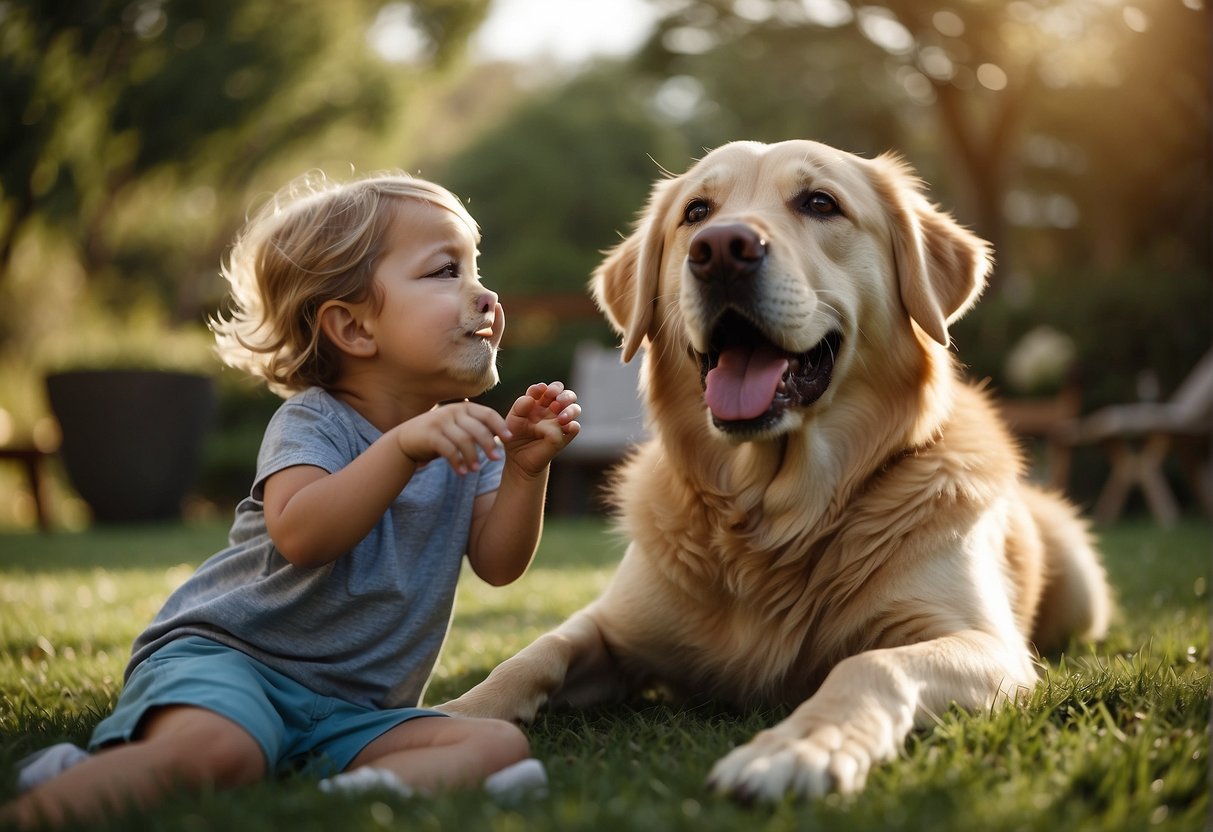
Choosing the right dog for your family is a big deal. You want a pet that’s great with kids, easy to train, and fits well into your lifestyle, whether you live in a big house with a yard or a smaller, cozy space. Let’s look at some of the best breeds that families like yours often love.
Labrador Retriever
Labrador Retrievers are one of the best family dogs out there. They’re friendly and patient, making them a fantastic choice if you have little ones running around. Labs are large dogs, typically weighing between 55 to 80 pounds, but they have a reputation for being gentle and playful.
Golden Retriever
Another top breed for families is the Golden Retriever. These dogs are famous for their cheerful disposition and devotion to their human families. Golden Retrievers are also large dogs, much like Labs, and they quickly become an integral part of any family they join.
Beagle
If you’re looking for a smaller dog, the Beagle could be right up your alley. These curious and merry dogs usually tip the scales at a more manageable 20 to 30 pounds. They love to play and are known for their incredible sense of smell and desire to explore the world.
Bulldog
Bulldogs are great for families that live in smaller spaces like apartments. They’re medium-sized dogs with a calm and courageous personality. Bulldogs might look gruff, but they’re actually quite affectionate and are well-known for being good with kids.
Poodle
Poodles come in three sizes: standard, miniature, and toy, so you can pick the size that’s best for your family. Highly intelligent and easily trained, Poodles have a curly, hypoallergenic coat which might be ideal if you’re concerned about allergies. They’re active and graceful, whether joining family activities or learning new tricks.
How to Assess a Dog’s Personality
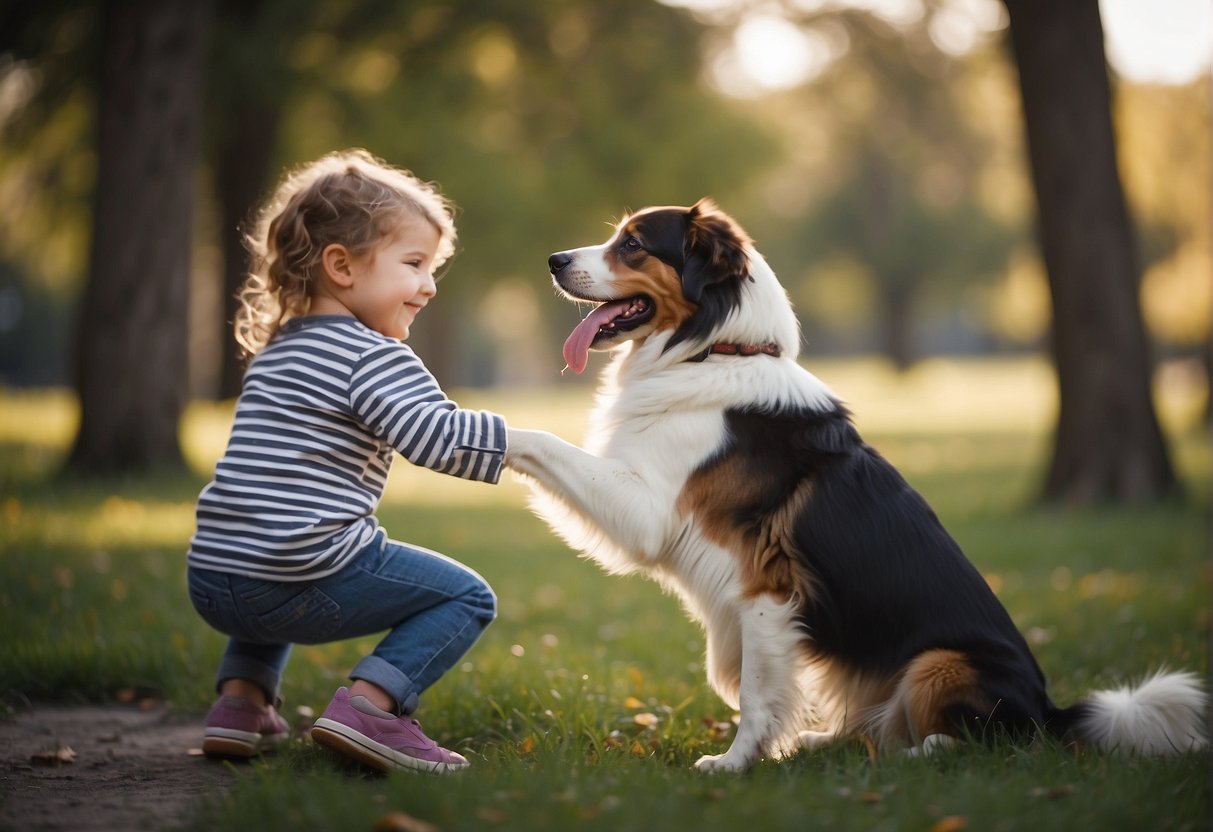
When looking for a new dog to join your family, it’s important to understand their personality and temperament. This can help ensure a good fit with your children and household.
Observing the Dog’s Interaction with Children
To start, watch how a dog behaves around kids. Is the dog patient and gentle? Do they seem at ease with the loud and unpredictable movements that children can make? Look for signs of a good nature like a wagging tail and a relaxed posture. These clues can indicate the dog’s comfort level with youngsters.
Signs of a Good Match
A dog that’s a good match for your family will display certain traits. They’ll typically be:
- Playful but not overly rough
- Responsive to commands, showing they can be controlled in excitable situations
- Interested in engaging with your kids, without showing possessiveness over toys or food
The American Kennel Club (AKC) Meet the Breeds event or other “meet the breeds” events can be great opportunities to observe how different breeds interact with children.
Red Flags to Watch Out For
Some behaviors may signal that a dog isn’t the right fit for a household with kids. You should be cautious if a dog shows:
- Aggression, such as growling or snapping around children
- Excessive shyness or fear, as this can lead to unpredictable behavior
- Signs of health problems that could affect temperament, like chronic pain
Whether you’re visiting a breeder or a rescue, make sure to ask about the dog’s history with children. For both puppies and adult dogs, considering their health care history can give indications about their ongoing behavior.
Preparing Your Home for a New Dog
Before a new dog joins your family, making your home safe for both the kids and the dog, as well as setting up a welcoming space, is crucial. It’s also key to teach your children about the responsibilities they’ll have in caring for their new pet.
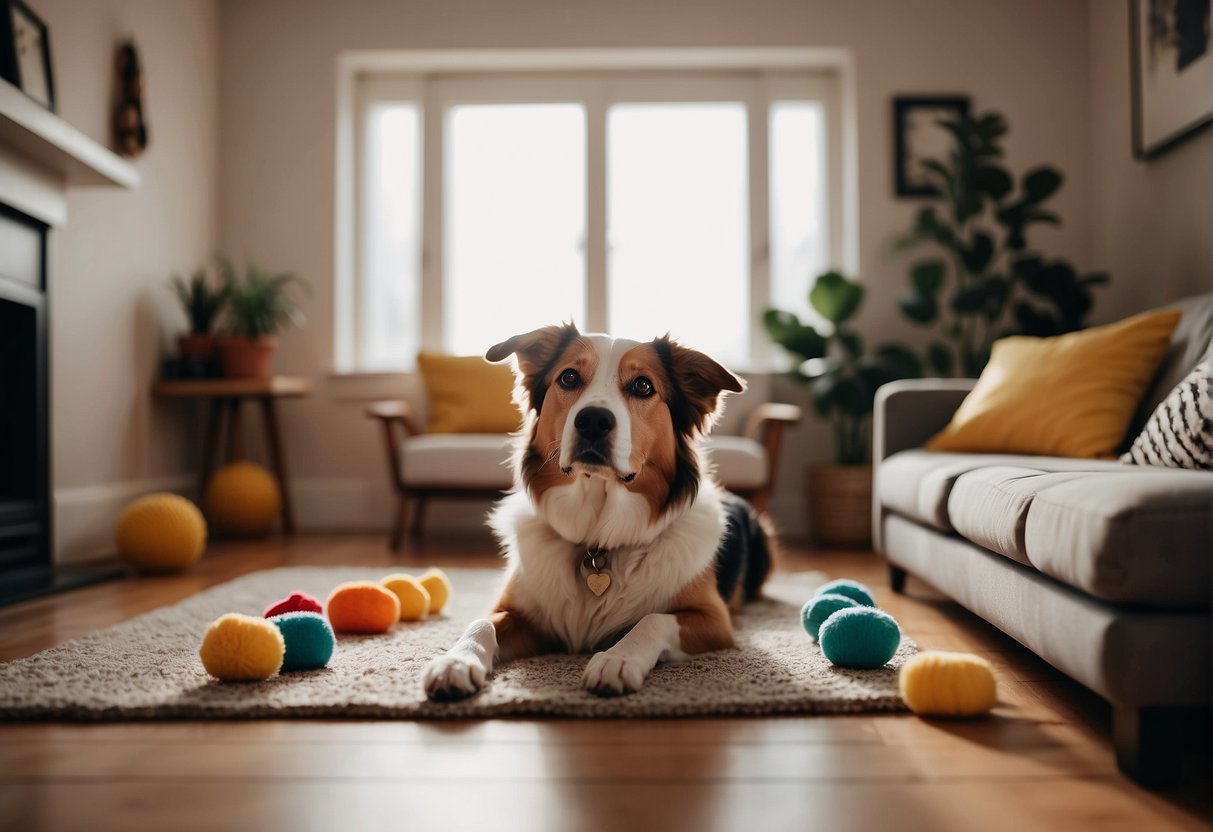
Safety Measures for Kids and Dogs
Safety should be your top priority when preparing your home for a new dog, especially if you have young children. Ensure that any small objects that could be a choking hazard for your dog are out of reach. Childproof locks on cabinets can prevent both kids and dogs from getting into household chemicals.
Discuss with your kids the importance of not leaving their toys around as dogs might chew on them and potentially ingest something harmful.
For families with allergy concerns, choosing a dog should involve careful consideration. Some breeds, like poodles or certain mixed breeds, shed less and might be less likely to trigger allergies. Consult your doctor and consider spending time with the breed you’re interested in to see if it’s a good fit.
Creating a Welcoming Environment
Setting up a special spot for your dog is essential. Dogs need a comfortable bed and a quiet place they can retreat to when they want some alone time. Use positive reinforcement to show the dog this is their special area. A mixture of old and new toys can make a dog feel at home.
Training and Responsibilities for Children
Teaching your kids how to interact with the new dog is about more than just training the dog; it’s about training your kids, too. Create simple, clear rules like “always approach the dog calmly” and “no pulling on ears or tails”. This helps kids understand how to treat the dog with respect.
Designate age-appropriate responsibilities for your children when it comes to dog care. Depending on their age, these can range from filling the dog’s water bowl to helping with grooming. Remember that expectations should be reasonable; young children can’t be expected to walk the dog alone but can assist with supervision.
Involving Children in the Selection Process
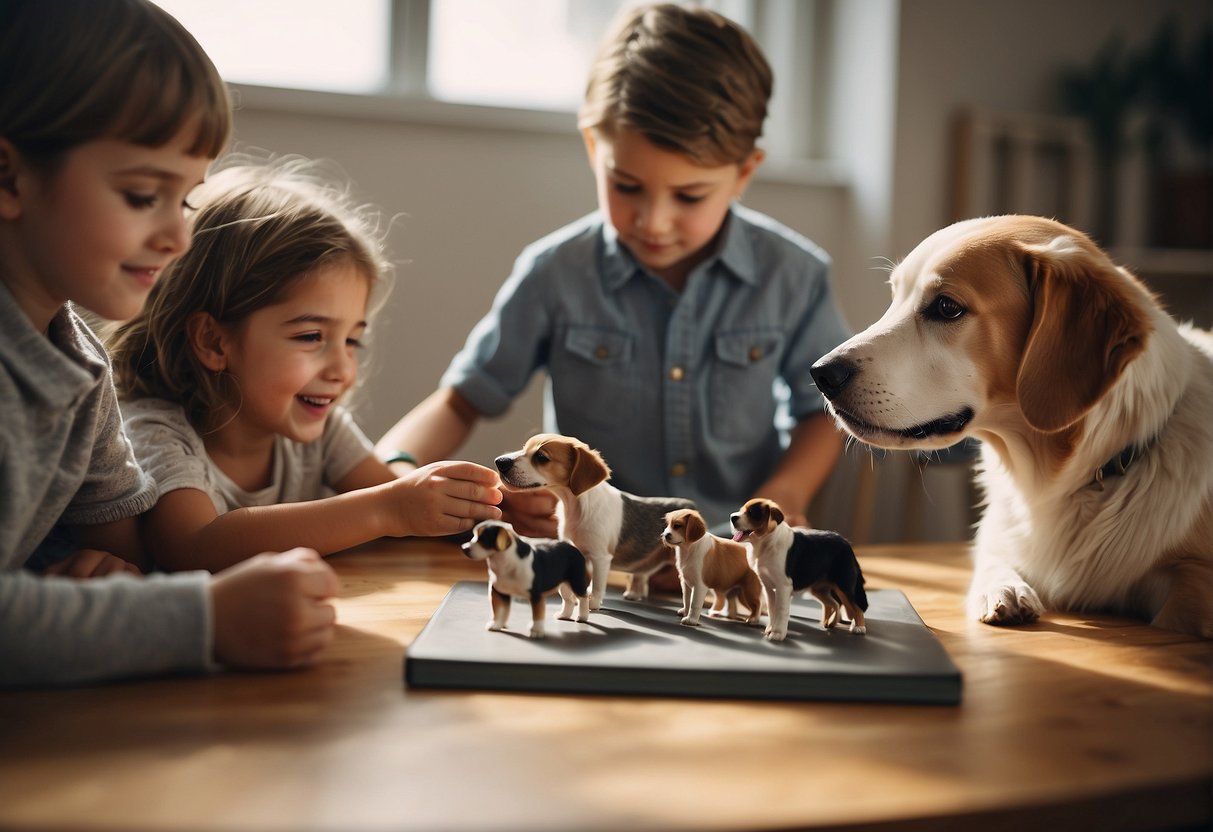
When looking for the perfect family dog, involving your kids in the selection process not only makes them feel important but also helps ensure that the dog’s personality aligns with your children’s lifestyle and energy levels.
Educating Kids on How to Interact with Dogs
Before jumping into meetings with potential dogs, make sure to educate your children on how to properly and safely interact with dogs. Educating your kids is a two-way street: it protects both the child and the dog during their first interaction and lays the groundwork for a positive relationship.
- Explain gentle behavior: Kids should know that dogs aren’t toys but living beings that deserve gentle touch.
- Outline dog body language: Teach them what signs to look out for, like a wagging tail or exposed belly, which could indicate a dog’s mood.
- Interaction quiz: Create a simple quiz with pictures to help kids identify friendly versus aggressive dog behavior.
Including Children in Meetings and Readiness Activities
When you meet dogs, having your children present is key to observing how the dog engages with them. This hands-on experience is where you’ll see if the dog’s energy and personality are a good match for your family.
- Visit multiple dogs: Don’t settle on the first dog you meet. Exposure to various dogs can give you a better idea of what works for your family.
- Readiness activities: Set up scenarios during your visit that mimic typical family interactions, like throwing a ball or calmly sitting together.
- Monitor the interaction: Keep a close eye on how the dog and your kids are together, looking for positive signs like a calm demeanor or gentle play.
Final Thoughts
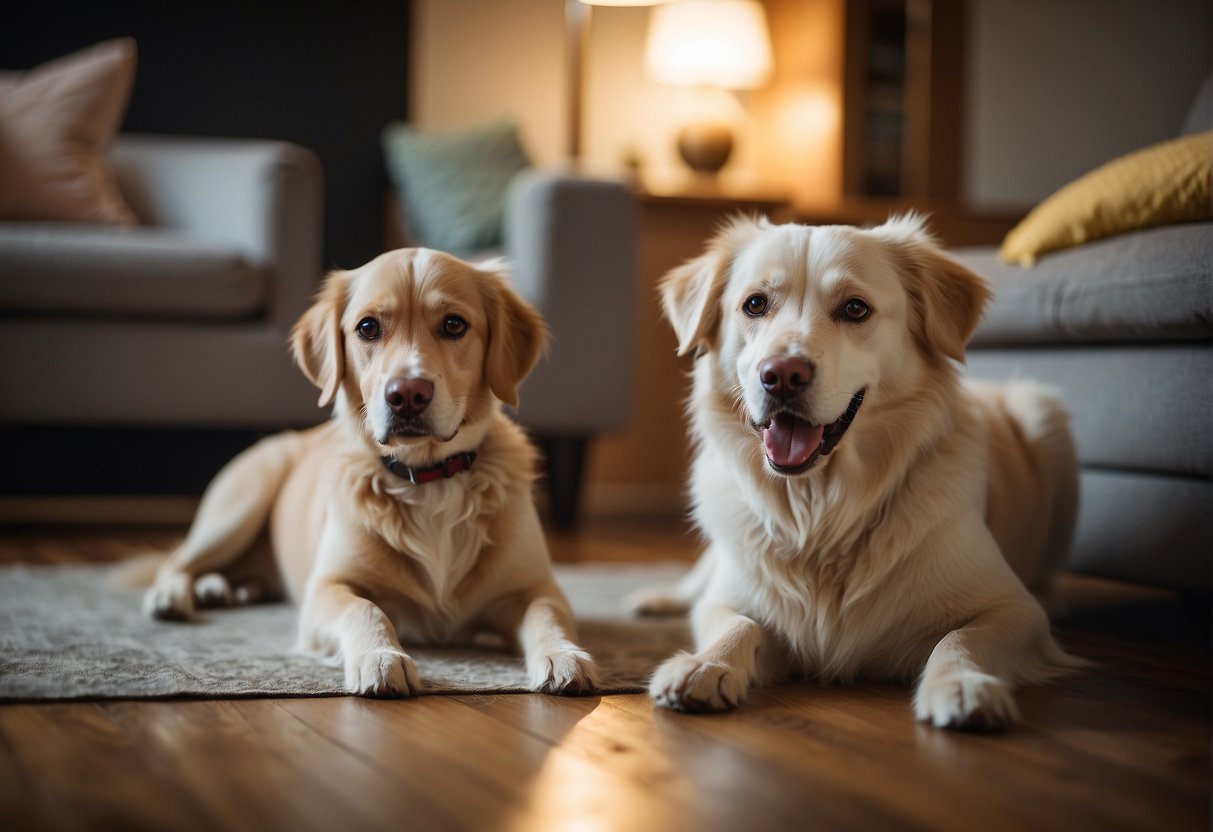
When bringing a new dog into your home, it’s essential to match their energy and needs with your family’s lifestyle. You want a pet that grows with your family, so think about the long-term commitment. Here’s a simple breakdown to help you:
- Expectations: Set realistic expectations. Puppies require training and time, while older dogs might blend into family life quicker.
- Lifestyle: Your daily routine matters. Active families might enjoy a high-energy dog, while calmer dogs suit more laid-back homes.
But you have to consider more than just personality:
- Pet Insurance: It’s wise to prepare for unexpected health issues. Look into pet insurance that fits your budget.
- Nutrition: A healthy diet keeps your pet in top shape. Quality nutrition can ward off diseases and aligns with your dog’s age and breed.
Remember, beyond breed characteristics, every dog has its unique personality, which might be influenced by genetic predispositions.
If you’re not set on a purebred, animal shelters and breed rescues are worth visiting. They have plenty of dogs longing for a home that could be your perfect match. Plus, adopting from a local shelter can be a more affordable option and often gives you the chance to make a difference in an animal’s life.
Be patient during your search. Sometimes, the right companion takes time to find. But once you do, they’ll become a cherished member of your family.
